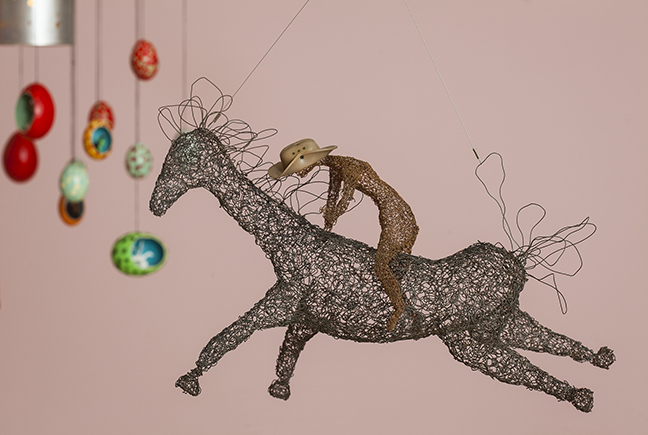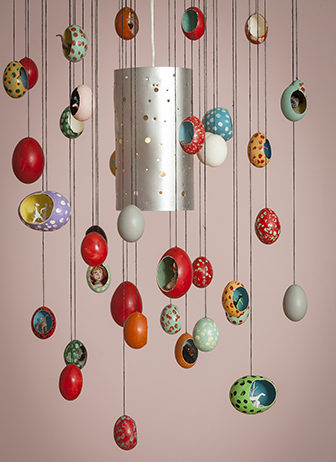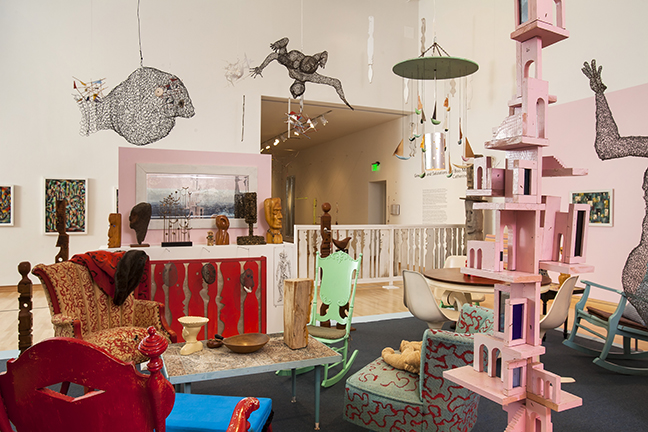Tinker Mobile

Lesson Plan by Teresa Cantero
High School Art Teacher, Morton East High School
Suggested Grade Level: 6–12
Time to Complete: 3–5 weeks
Big Idea: Imagination
Students will draw inspiration from the art of Mary Nohl to create a mobile. Mary Nohl’s approach to art and the materials she used were imaginative. In this project, students will be encouraged to emulate her work: to play, experiment, and create their mobiles out of various materials, found and manufactured. While engaging in the planning and art-making process, students will address these questions: What conditions, attitudes, and behaviors support creativity and innovative thinking? How do artists learn from trial and error?
Discussion questions
• How do Mary Nohl and Eugene Von Bruenchenhein use common/found/everyday material in their artwork?
• How does this change the way we view the material used in their art making?
• How did their environment influence their work?
Objectives
• Students will describe how the artists use everyday experiences and ordinary materials to create meaning in their work.
• Students will explore and experiment with a variety of materials and techniques to construct a mobile.
• Students will describe the creative process and meaning behind their work and how it was inspired by the work of Mary Nohl.


Materials
Wire
String/fishing line
Modeling clay
Paint
Paint brushes
Various types of adhesive
Art metal foil
Assorted craft paper
Scissors
X-Acto knives
Wire cutters
Sculpting tools
Step-by-step
1. Students will create a mind map to help them develop their idea.
2. Students will explore works of art by Mary Nohl, Eugene Von Bruenchenhein, Alexander Calder, and various other artists who used found objects in their work.
3. Students will make a sketch of the pieces they will use in their mobiles.
4. Students will make a diagram of how they will arrange and hang their pieces in their mobile.
5. Students will begin constructing/playing/experimenting with the material and found objects they plan to use.
6. Once all their pieces are constructed, they will be strung and assembled.
7. Students will write a process reflection and an artist statement.
National Standard Connection
VA:Cr1.1.HSI: Use multiple approaches to begin creative endeavors
VA:Cr2.1.8: Demonstrate a willingness to experiment, innovate, and take risks to pursue ideas, forms, and meanings that emerge in the process of art making or designing.
VA:Cn10.1.HSI: Document the process of developing ideas from early stages to fully elaborated ideas.




